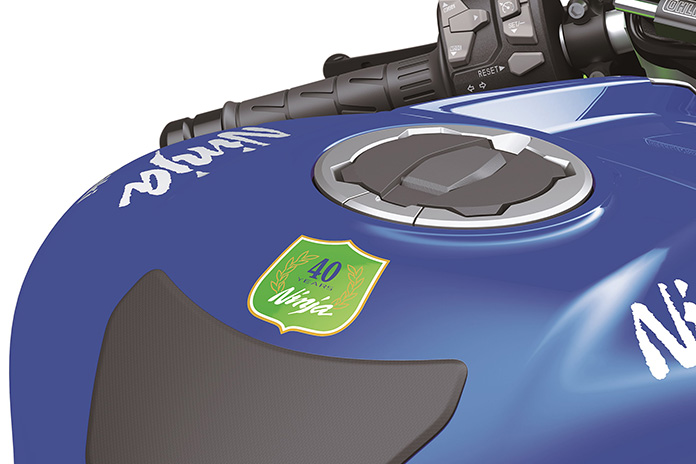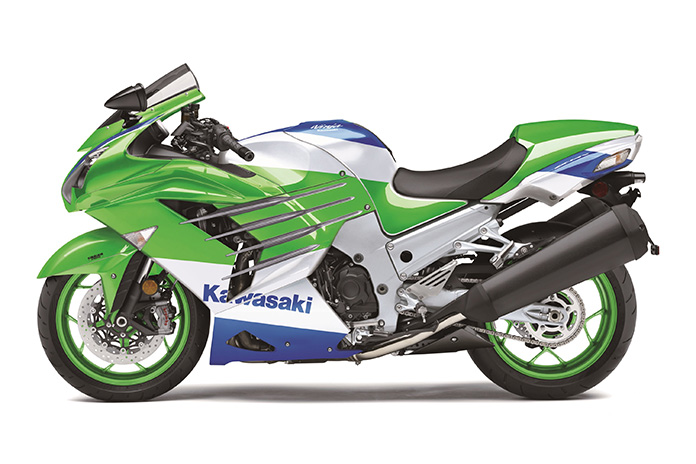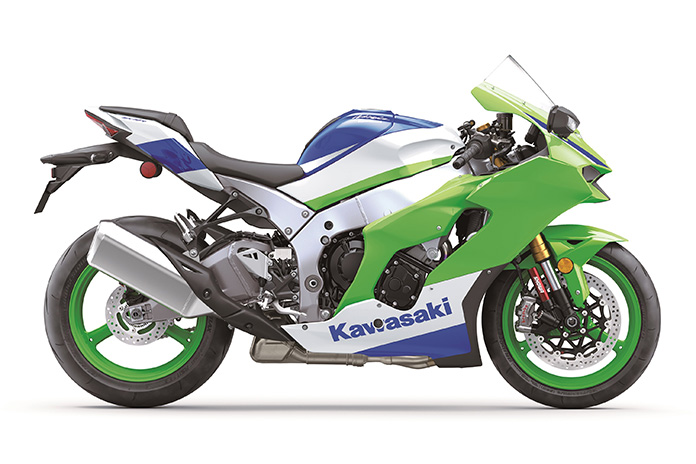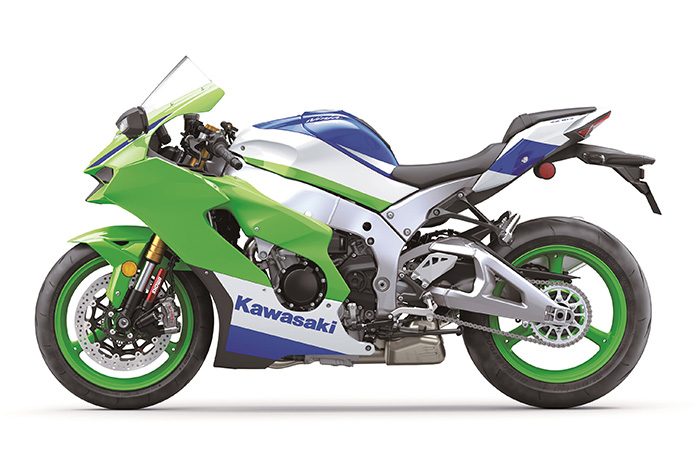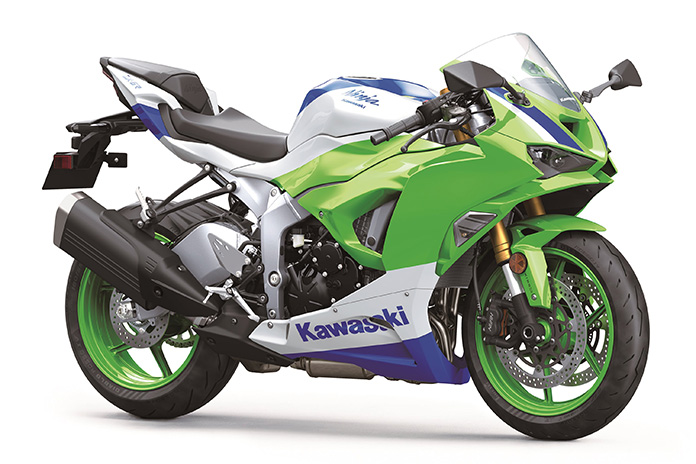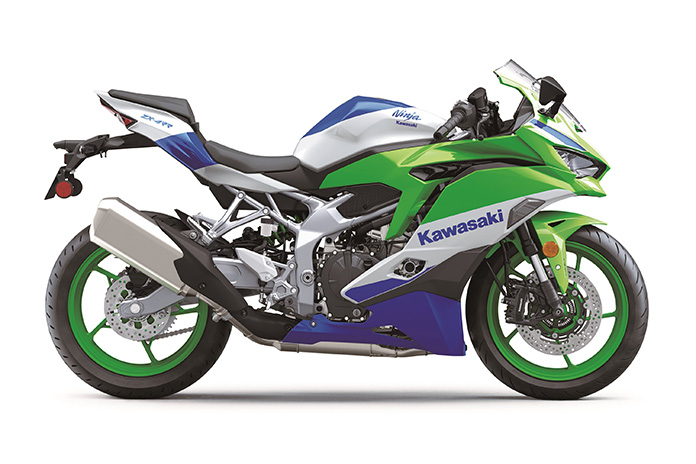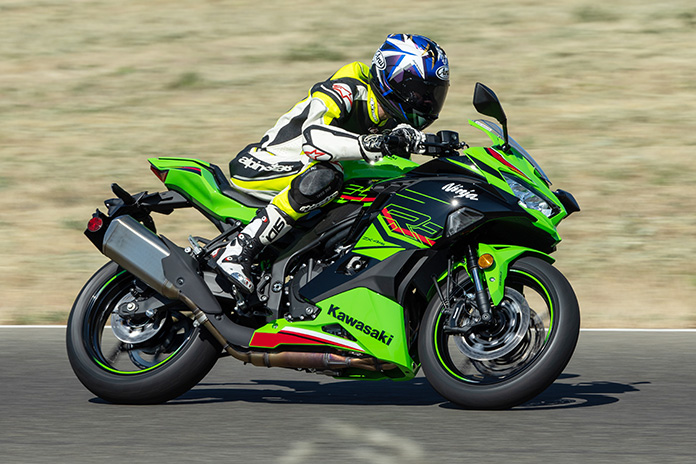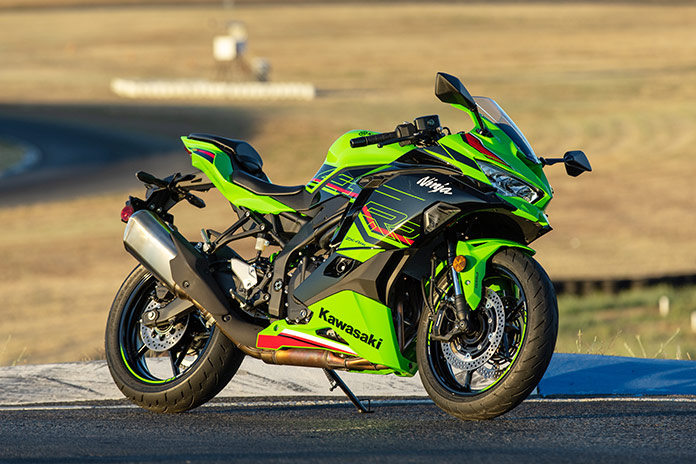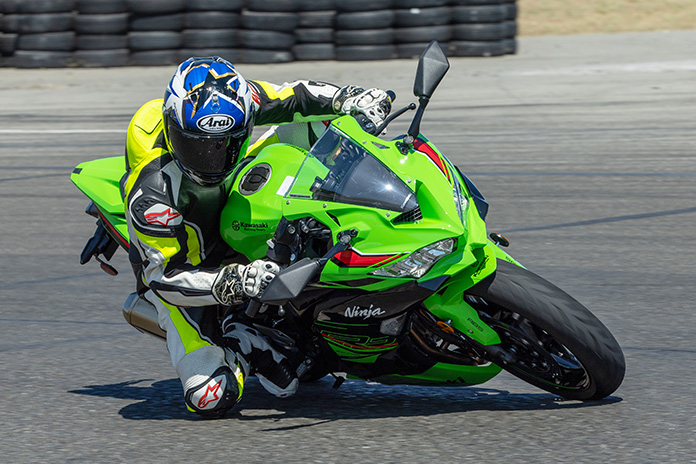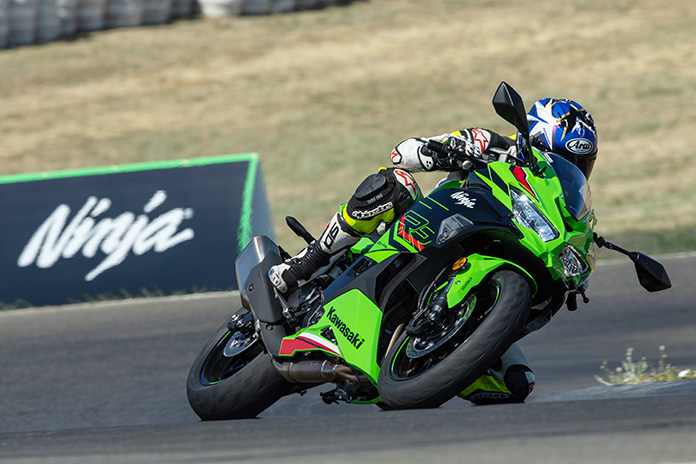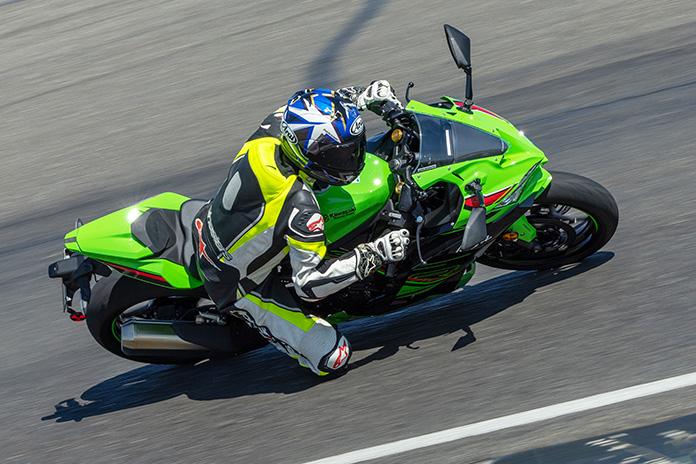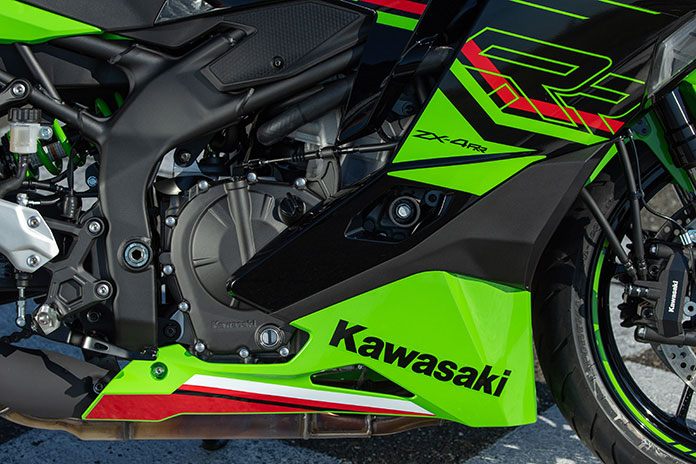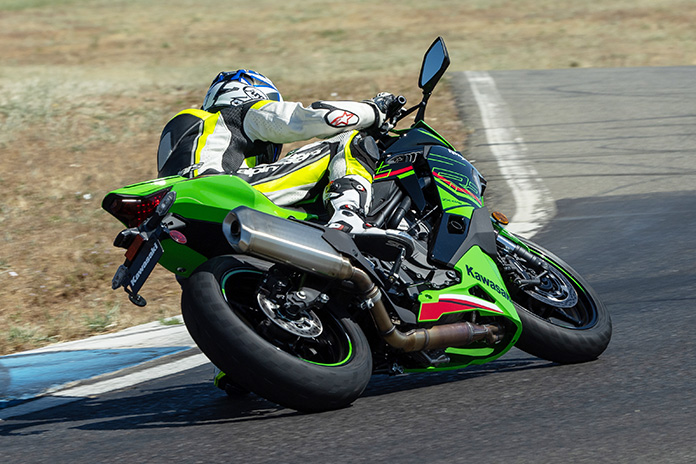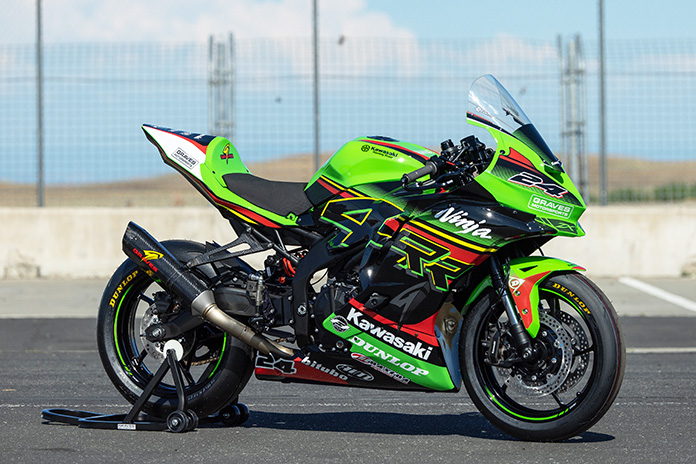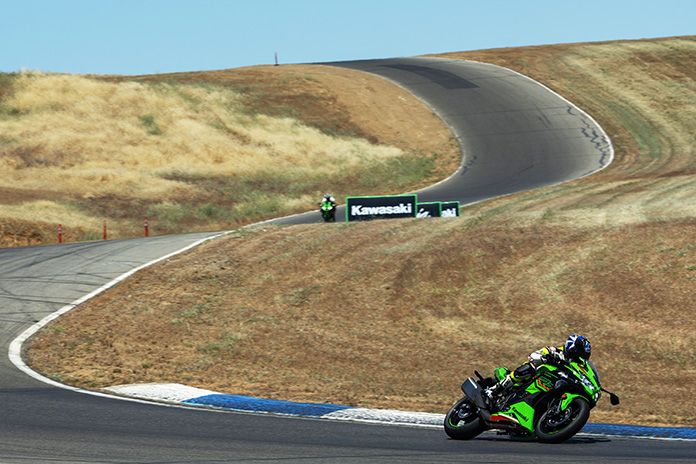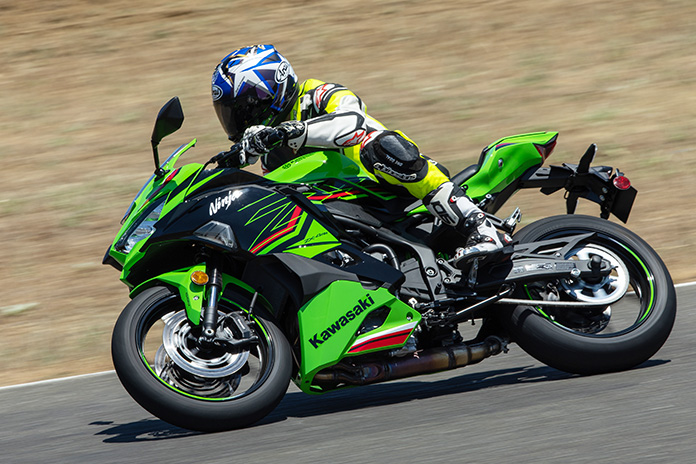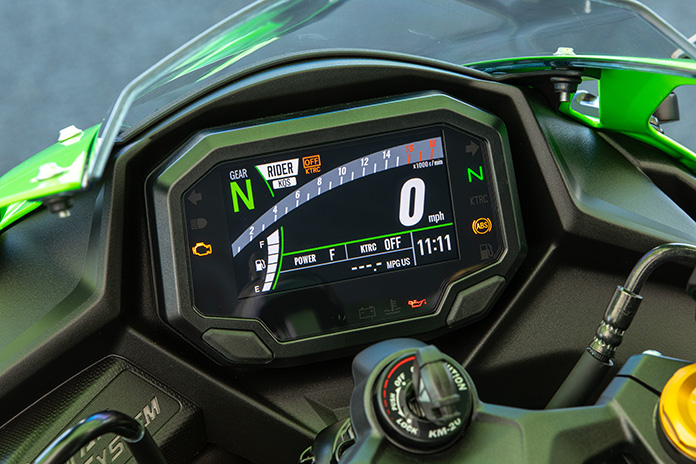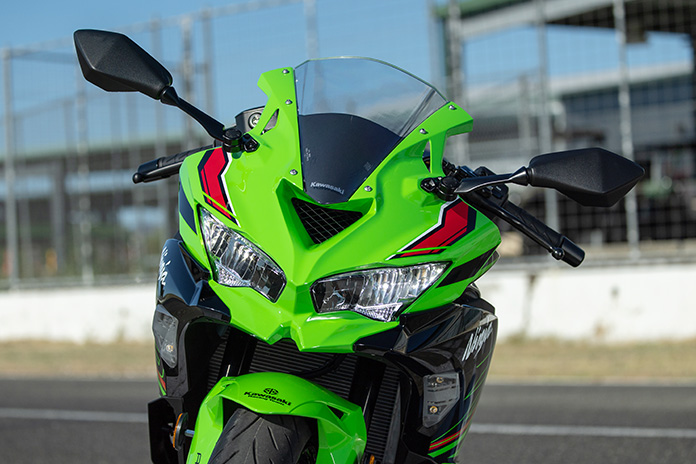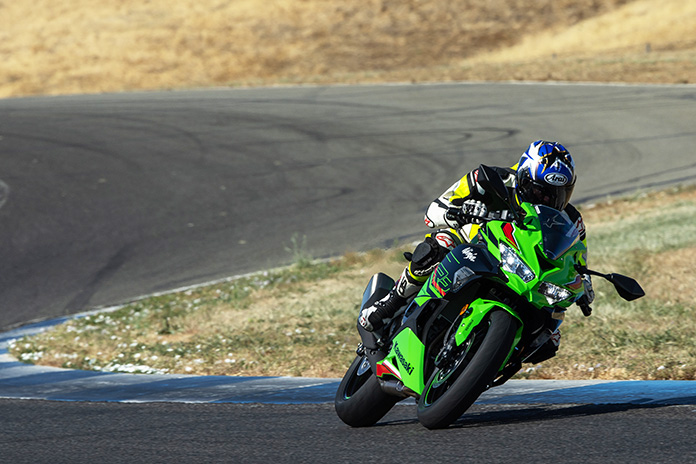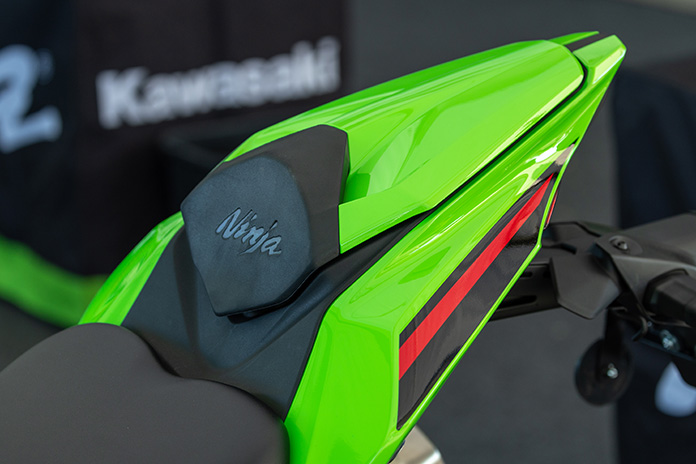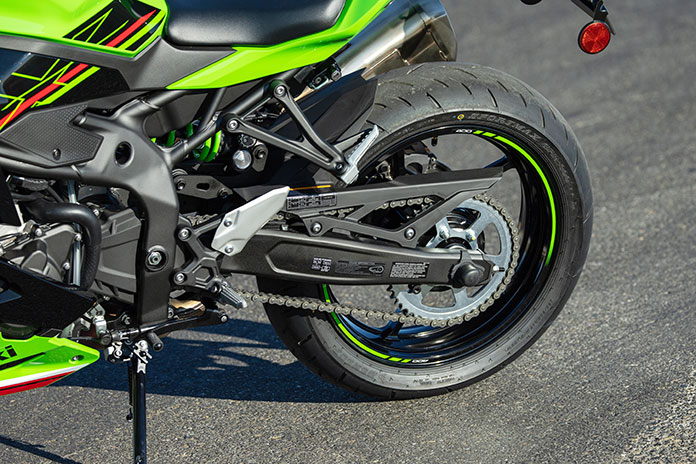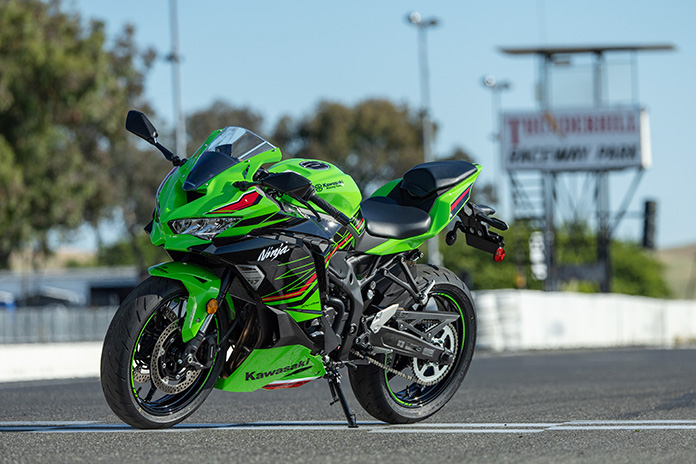In recognition of the introduction of the Kawasaki Ninja four decades ago, Kawasaki is releasing the 2024 Ninja 40th Anniversary Edition motorcycles. A special Ninja ZX-7-inspired colorway will be available on the Ninja ZX-4RR ABS, Ninja ZX-6R ABS, Ninja ZX-10R ABS, and Ninja ZX-14R ABS. All bikes will be available in winter 2023.
Kawasaki said that in the 40 years since the bike’s inception, “the Ninja moniker has become one of the most recognizable motorcycle names in the industry. Since first arriving on the scene in 1984, and officially rebranding the famous GPz900R, the Kawasaki Ninja brand of motorcycles continue to illustrate the pursuit of high performance in every displacement class.”
Embracing Kawasaki’s pursuit of innovation on the racetrack, the Ninja ZX-7 became the brand’s flagship in the FIM Endurance World Championship, finding its way to the top step of the podium in 1991, 1992, and 1993. In the U.S., Kawasaki continued its championship run in AMA Superbike, adding four additional titles in 1990, 1992, 1996, and 1997 to make nine overall championships in the series. In 1993, Kawasaki rider Scott Russell captured the WorldSBK Championship aboard his Ninja ZX-7R.
A specially reproduced three-color livery will be found on each 40th Anniversary Edition model, with a large “Kawasaki” logo on the fairings. All logos featured on the motorcycle are reproduced from original drawings, and the various other elements were specially designed to bring back memories of the Ninja ZX-7 series’ list of wins.
A special 40th Anniversary emblem designed to resemble a championship sticker can be found on the top of the fuel tank, and the displacement numbers featured on the tail cowl are based on the fonts used in the ’80s and ’90s. Completing the iconic throwback look are specially painted lime green wheels on all models; a silver-painted frame and swingarm on the Ninja ZX-10R, Ninja ZX-6R, and Ninja ZX-4RR; and gold-painted front fork outer tubes on the Ninja ZX-10R and Ninja ZX-6R.
See all of Rider‘s Kawasaki coverage here.
2024 Kawasaki Ninja ZX-14R ABS 40th Anniversary Edition
The 2024 Ninja ZX-14R supersport will return to dealership floors just for this special 40th anniversary celebration. The bike features a liquid-cooled 1,441cc inline-Four with DOHC and 4 valves per cylinder, a 6-speed gearbox, and a slip/assist clutch. It is equipped with two power modes and a three-mode Kawasaki TRaction Control (KTRC) system that can easily be turned on or off with switches.
The Ninja ZX-14R also features stainless steel-braided clutch and brake lines; Brembo 4-piston monobloc calipers paired with dual 310mm floating front discs; a 43mm inverted fork with adjustable preload, 18-way compression, and 15-way rebound damping adjustment and offering 4.6 inches of travel; and a fully adjustable bottom-link Uni-Trak and gas-charged shock with 4.9 inches of travel.
The 2024 Kawasaki Ninja ZX-14R ABS 40th Anniversary Edition will start at $17,249.
2024 Kawasaki Ninja ZX-10R ABS 40th Anniversary Edition
The Kawasaki Ninja ZX-10R supersport has carried Kawasaki to seven FIM Superbike World Championships (WorldSBK) since 2013. The Ninja ZX-10R has a 998cc inline-Four with 4 valves per cylinder and paired with Kawasaki Cornering Management Function (KCMF), Bosch IMU, Sport-Kawasaki TRaction Control (S-KTRC), Kawasaki Launch Control Mode (KLCM), Kawasaki Intelligent anti-lock Brake System (KIBS), Kawasaki Engine Brake Control, Kawasaki Quick Shifter (KQS), Öhlins electronic steering damper, and power modes.
An aluminum twin-spar frame, Showa Balance Free Front Fork (BFF), and horizontal back-link rear suspension with a Showa Balance Free Rear Cushion (BFRC) shock have been developed with technology straight from Kawasaki’s WorldSBK factory racers and contribute to the Ninja ZX-10R’s cornering performance and light handling. Color TFT instrumentation with smartphone connectivity via Rideology the App and electronic cruise control further add to the convenience.
The 2024 Kawasaki Ninja ZX-10R ABS 40th Anniversary Edition will start at $19,149.
2024 Kawasaki Ninja ZX-6R ABS 40th Anniversary Edition
For the 2024 lineup, Kawasaki welcomed the return of the class-leading Ninja ZX-6R ABS supersport motorcycle, which features a 636cc inline-Four with DOHC engine, a 6-speed gearbox, and a slip/assist clutch. Revised cam profiles offer better low-rpm performance and help meet stricter emission standards. Another update to help meet emission standards is a revised layout for the header pipes.
The brakes remain dual 310mm front discs with dual radial-mounted 4-piston monoblock calipers up front with a single 220mm disc in the rear. New for model year 2024 are the round disc brakes replacing the petal discs. The suspension also remains unchanged, including the 41mm Showa SFF-BP fork and Uni-Trak shock that are adjustable for preload, compression, and rebound damping.
Other features include the Kawasaki Quick Shifter (KQS), Kawasaki Intelligent anti-lock Brake System (KIBS), selectable power modes combined with Kawasaki TRaction Control (KTRC), a multifunction LCD screen, and a pressed-aluminum perimeter frame.
We tested the 2024 Kawasaki Ninja ZX-6R at Ridge Motorsports Park near Olympia, Washington, and called it “an incredibly well-balanced machine for unwinding twisty roads and racetracks. It has enough power to excite but not overwhelm.”
Related: 2024 Kawasaki Ninja ZX-6R Review | First Ride
The 2024 Kawasaki Ninja ZX-6R ABS 40th Anniversary Edition will start at $12,649.
2024 Kawasaki Ninja ZX-4RR ABS 40th Anniversary Edition
The Ninja ZX-4R boasts a new liquid-cooled 399cc inline-Four with DOHC and 4 valves per cylinder. It has a lightweight, compact trellis frame, a quickshifter, 4-piston radial-mount monoblock front calipers squeezing 290mm semi-floating discs, a 37mm inverted Showa SFF-BP (Separate Function Fork – Big Piston) fork with adjustable preload and 4.7 inches of travel, and a fully adjustable horizontal back-link Showa BFRC (Balance Free Rear Cushion) Lite shock with 4.9 inches of travel.
We tested the 2023 Ninja ZX-4RR at Thunderhill Raceway in Northern California, and our reviewer said: “It’s worth reiterating how much of a gigglefest it is to hammer a modestly powered but lightweight sportbike around a racetrack, even for riders with decades of experience on high-powered literbikes. And for those who might be taking to the track for the first time, a sporting motorcycle like the ZX-4RR is an ideal tool to learn how to do it properly.“
Related: 2023 Kawasaki Ninja ZX-4RR | First Ride Review
The 2024 Kawasaki Ninja ZX-4RR 40th Anniversary Edition ABS will start at $10,299.
For more information, visit the Kawasaki website.
Check out more new bikes in Rider‘s 2024 Motorcycle Buyers Guide
The post 2024 Kawasaki Ninja 40th Anniversary Editions | First Look appeared first on Rider Magazine.
Source: RiderMagazine.com


